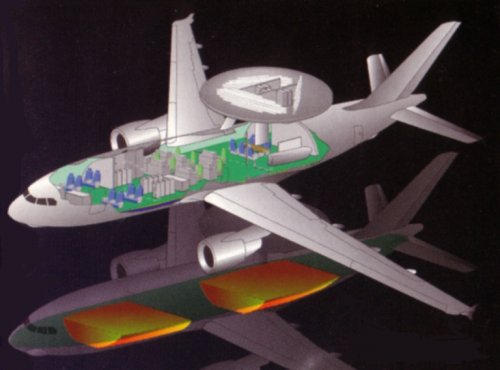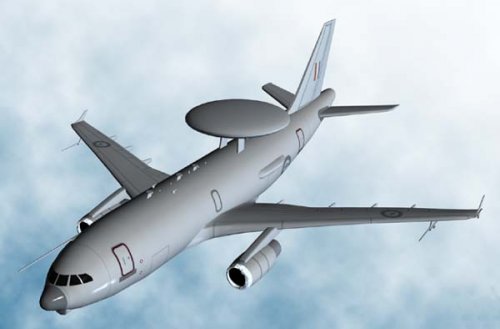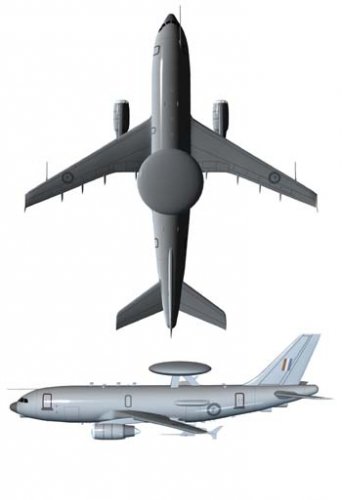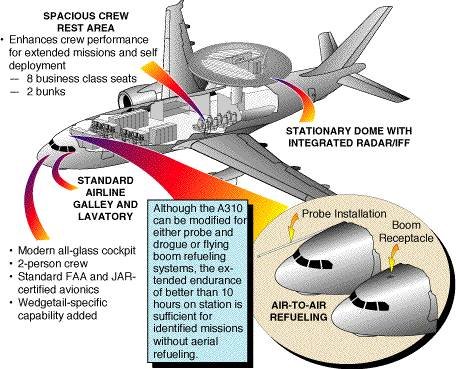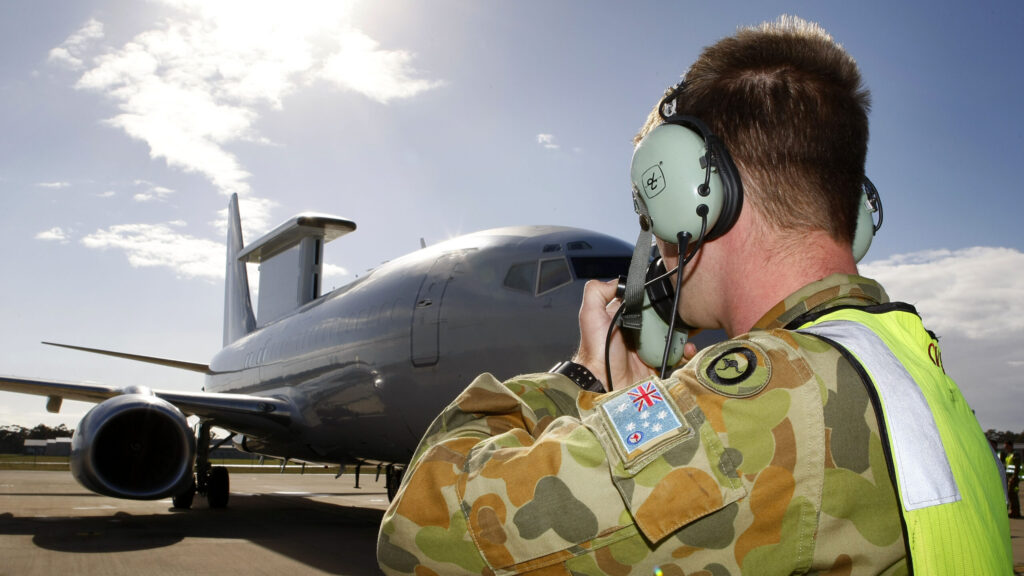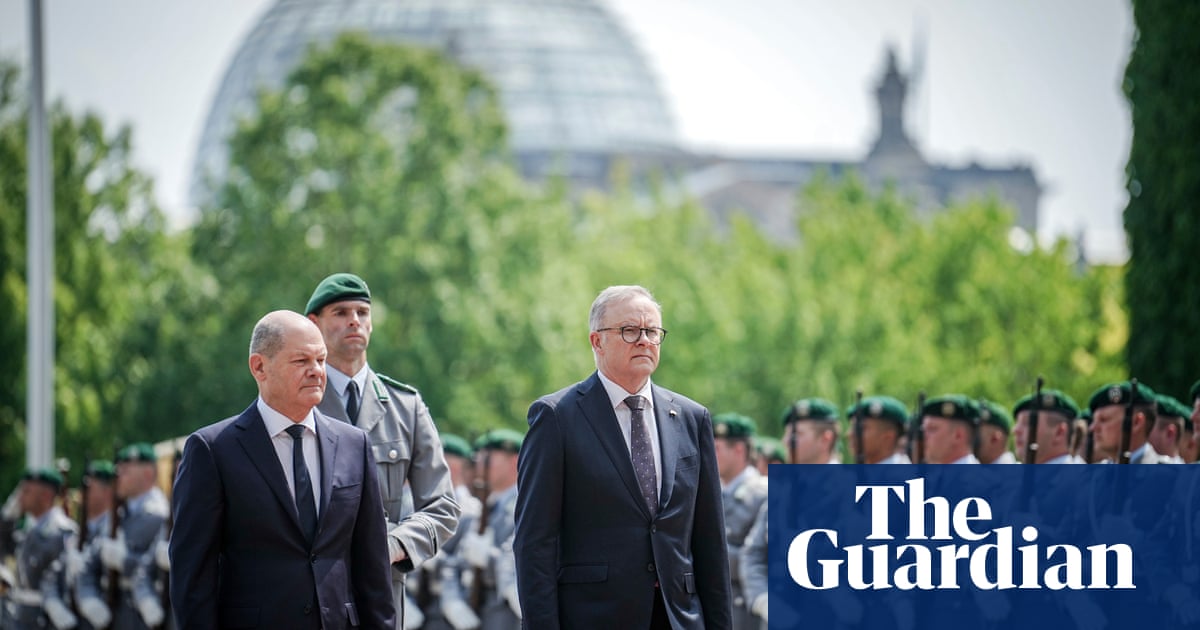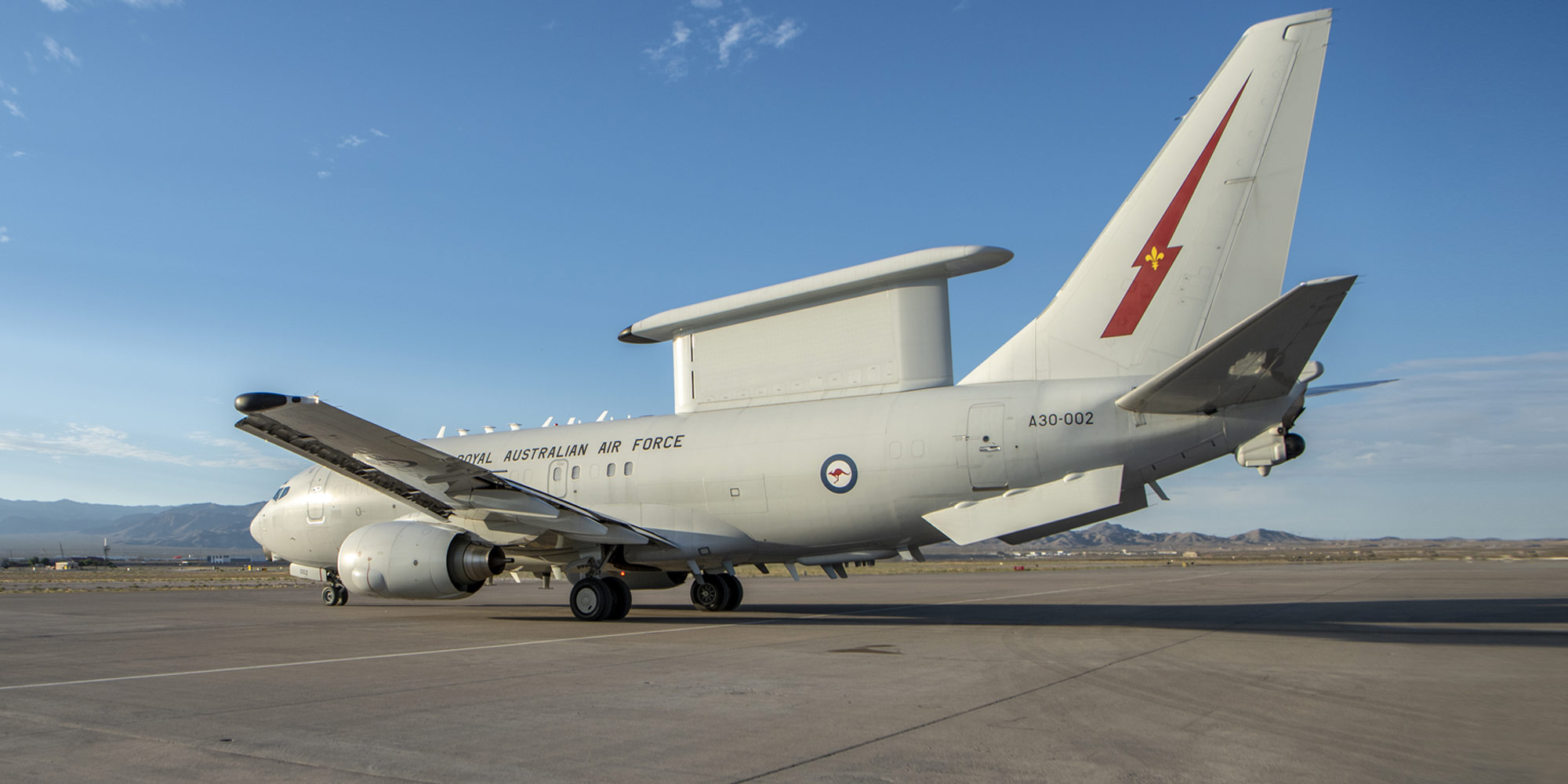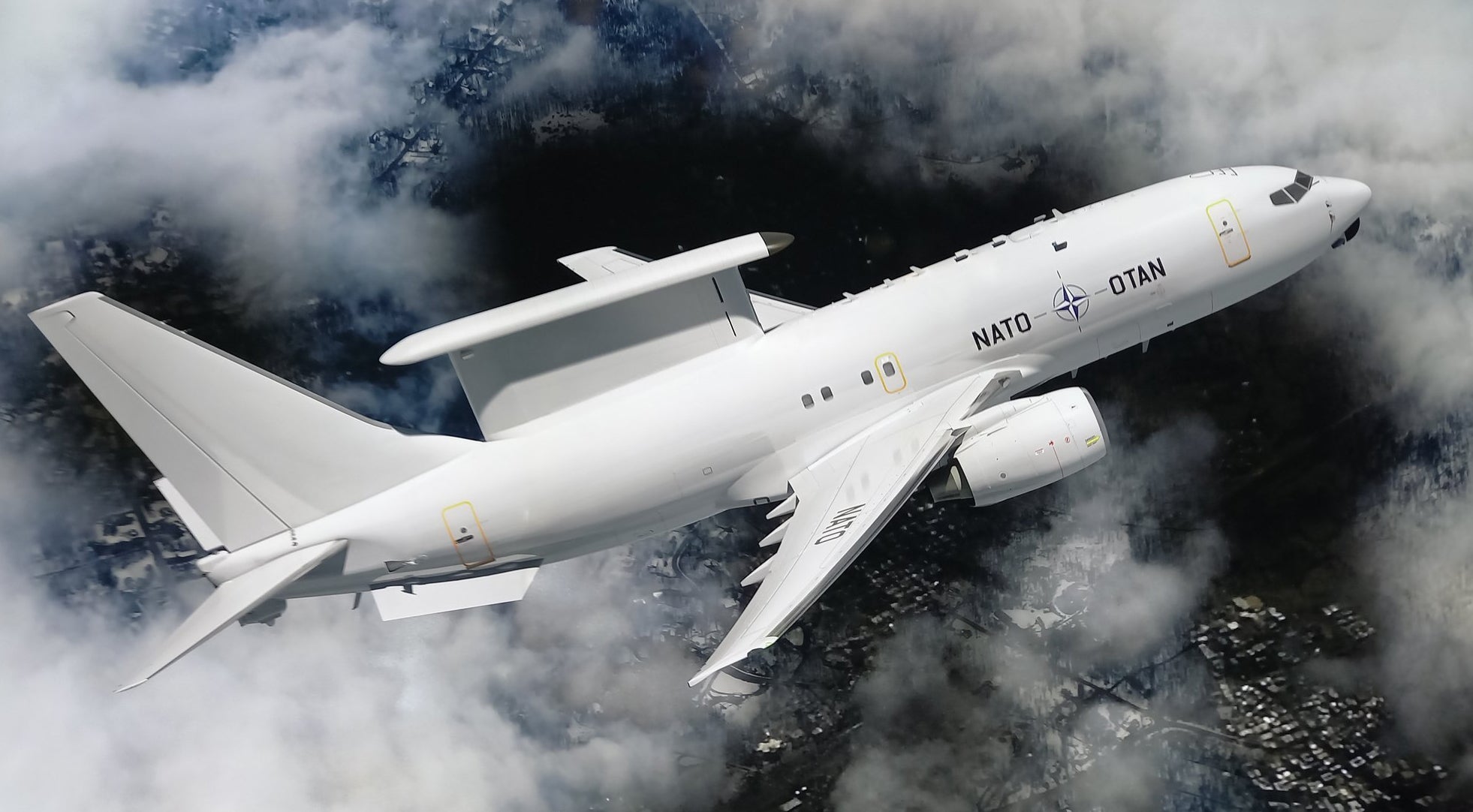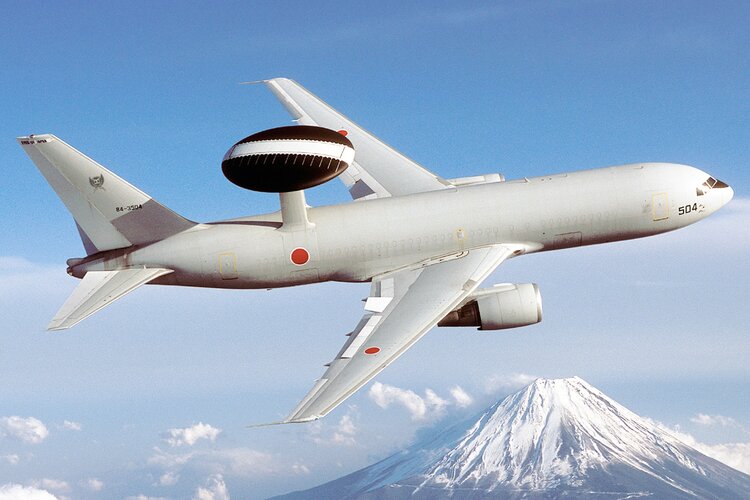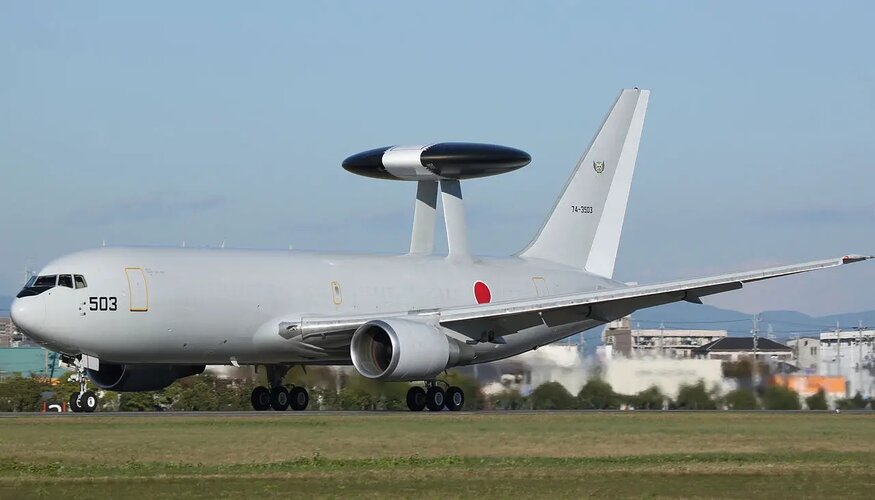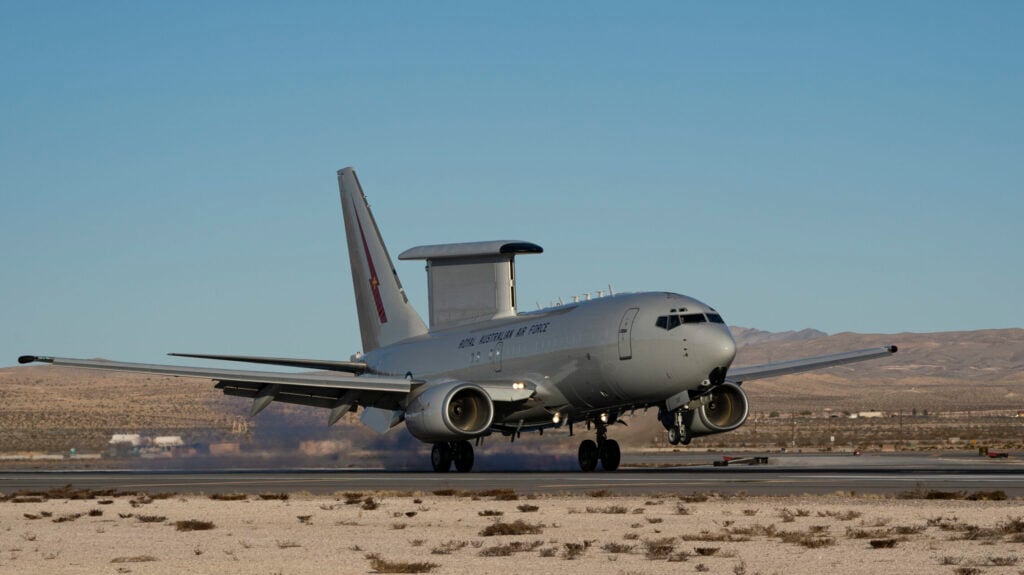Raytheon Systems Company, Elta Division of Israeli Aircraft Industries, and Airbus Industries A130-based submission for the Royal Australian Air Force (RAAF) Project Wedgetail Airborne Early Warning and Control System (AEW&C) system. The team also included Hawker de Havilland, Honeywell Australia, E-Systems Australia, Australian Defence Industries and Adacel.
Sources:
http://www.ausairpower.net/TE-Wedgetail-99.html
http://www.fas.org/programs/ssp/man/uswpns/air/special/e310.html
http://www.globalsecurity.org/military/systems/aircraft/e-310.htm
Sources:
http://www.ausairpower.net/TE-Wedgetail-99.html
http://www.fas.org/programs/ssp/man/uswpns/air/special/e310.html
http://www.globalsecurity.org/military/systems/aircraft/e-310.htm

